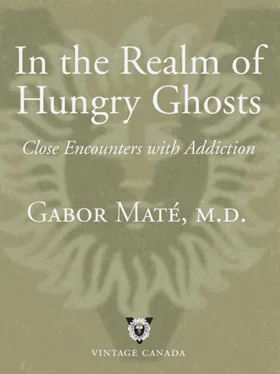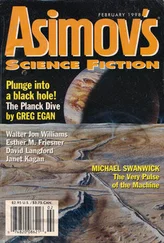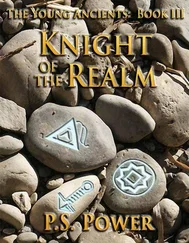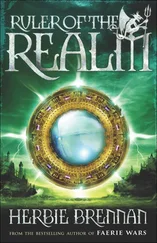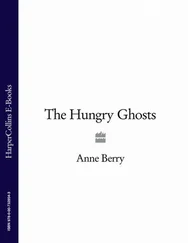THOMAS À KEMPIS, FIFTEENTH-CENTURY CHRISTIAN MYSTIC
The Imitation of Christ
CHAPTER 20

“A Void I’ll Do Anything to Avoid”
There are almost as many addictions as there are people. In the Brahmajāla Sutta, the spiritual master Gotama identifies many pleasures as potentially addictive.
…Some ascetics and Brahmins…remain addicted to attending such shows as dancing, singing, music, displays, recitations, hand-music, cymbals and drums, fairy shows;…combats of elephants, buffaloes, bulls, rams;…maneuvers, military parades;…disputation and debate, rubbing the body with shampoos and cosmetics, bracelets, headbands, fancy sticks…unedifying conversation about kings, robbers, ministers, armies, dangers, wars, food, drink, clothes…heroes, speculation about land and sea, talk of being and non-being… 1
Gotama, known to us as the Buddha, lived and taught about twenty-five hundred years ago in what are now Nepal and northern India. Today he might also include in his sermon: sugar, caffeine, talk shows, gourmet cooking, music buying, right-or left-wing politics, Internet cafés, cell phones, the CFL or NFL or NHL, the New York Times, the National Enquirer, CNN, BBC, aerobic exercise, crossword puzzles, meditation, religion, gardening or golf. In the final analysis, it’s not the activity or object itself that defines an addiction but our relationship to whatever is the external focus of our attention or behaviour. Just as it’s possible to drink alcohol without being addicted to it, so one can engage in any activity without addiction. On the other hand, no matter how valuable or worthy an activity may be, one can relate to it in an addicted way. Let’s recall here our definition of addiction: any repeated behaviour, substance-related or not, in which a person feels compelled to persist, regardless of its negative impact on his life and the lives of others. The distinguishing features of any addiction are: compulsion, preoccupation, impaired control, persistence, relapse and craving.
Although the form and focus of addictions may vary, the same set of dynamics is at the root of them all. Dr. Aviel Goodman writes, “All addictive disorders, whatever types of behaviors that characterize them, share the underlying psychobiological process, which I call the addictive process. ” 2It’s just as Dr. Goodman suggests: addictions are not a collection of distinct disorders but the manifestations of an underlying process that can be expressed in many ways. The addictive process—I will refer to it as the addiction process —governs all addictions and involves the same neurological and psychological malfunctions. The differences are only a matter of degree.
There is plenty of evidence for such a unitary view. Substance addictions are often linked to one another, and chronic substance users are highly likely to have more than one drug habit: for example, the majority of cocaine addicts also have, or have had, active alcohol addiction. In turn, about 70 per cent of alcoholics are heavy smokers, compared with only 10 per cent of the general population. 3I don’t believe I’ve ever seen an injection drug user at the Portland Clinic who wasn’t also addicted to nicotine. Often nicotine was their “entry drug,” the first mood-altering chemical they’d become hooked on as adolescents. In research surveys more than half of opiate addicts have been found to be alcoholics, as have the vast majority of cocaine and amphetamine addicts, and many cannabis addicts as well. Both animal and human researches have demonstrated that common brain systems, brain chemicals, and pharmacological mechanisms underlie alcohol and other substance addictions. 4
All addictions, substance related or not, share states of mind such as craving and shame, and behaviours such as deception, manipulation and relapse. On the neurobiological level, all addictions engage the brain’s attachment-reward and incentive-motivation systems, which, in turn, escape from regulation by the “thinking” and impulse control areas of the cortex. We explored this process in detail in the previous section on drug addiction. What does research show about the nonsubstance addictions?
Let’s look at pathological gambling. Scientific work on this addiction is in its early stages, but as one researcher of pathological gambling writes, “preliminary results suggest the involvement of similar brain regions in drug-and non-drug-related urges.” 5Gamblers have abnormalities in the dopamine system, as well as in neurotransmitters other than dopamine. For example, like drug addicts, gamblers have diminished levels of serotonin—a brain chemical that helps to regulate moods and control impulses. One study compared physiological responses to a game of blackjack in two groups: pathological gamblers and casual players. Elevations of important neurotransmitters, especially dopamine, were much higher among the gamblers—that is, the brain’s incentive-motivation system was much more activated, just as with drug addictions. 6And the same areas “light up” on the brain imaging of gamblers as in drug addicts. Pathological gamblers behave like drug addicts—or, to a lesser extent, like me. “More than 40 people have been banned from B.C. casinos over the past three years for leaving their children alone in the car while they go inside,” a Vancouver newspaper reported in July 2006. Some children were discovered in casino parking lots in this province as late as 3 a.m. 7
It’s safe to say that any pursuit, natural or artificial, that induces a feeling of increased motivation and reward—shopping, driving, sex, eating, TV watching, extreme sports and so on—will activate the same brain systems as drug addictions. In an MRI study, for example, playing with monetary incentives “lit up” the brain areas also aroused in the course of drug intake. 8PET scanning revealed that the playing of video games raises dopamine levels in the incentive-motivation circuits. 9Personal history and temperament will decide which activities produce this effect for any particular individual, but the process is always the same. For someone with a relative shortage of dopamine receptors, it’s whichever activity best releases extra quantities of this euphoric and invigorating neurotransmitter that will become the object of addictive pursuit. In effect, people become addicted to their own brain chemicals. When caught in the urgent fever of my compact disc hunt, for instance, it’s that hit of dopamine I’m after.
The evidence is compelling in the case of overeating, where we most clearly see that a natural and essential activity can become the target of faulty incentive-reward circuits, aided and abetted by deficient self-regulation. PET imaging studies in addictive eaters have, predictably, implicated the brain dopamine system. As with drug addicts, obese people have diminished dopamine receptors; in one study, the more obese the subjects were, the fewer dopamine receptors they had. 10Recall that reduced numbers of dopamine receptors can be both a consequence of chronic drug use and a risk factor for addiction. Junk foods and sugar are also chemically addictive because of their effect on the brain’s intrinsic “narcotics,” the endorphins. Sugar, for example, provides a quick fix of endorphins and also temporarily raises levels of the mood chemical serotonin. 11This effect can be prevented by an injection of the opiate-blocking drug Naloxone, the same substance used to resuscitate addicts who overdose on heroin. 12Naloxone also blocks the comforting effects of fat. 13
“It is becoming apparent that eating and drug disorders share a common neuroanatomic and neurochemical basis,” conclude two experts on addiction and related disorders. 14
Читать дальше
